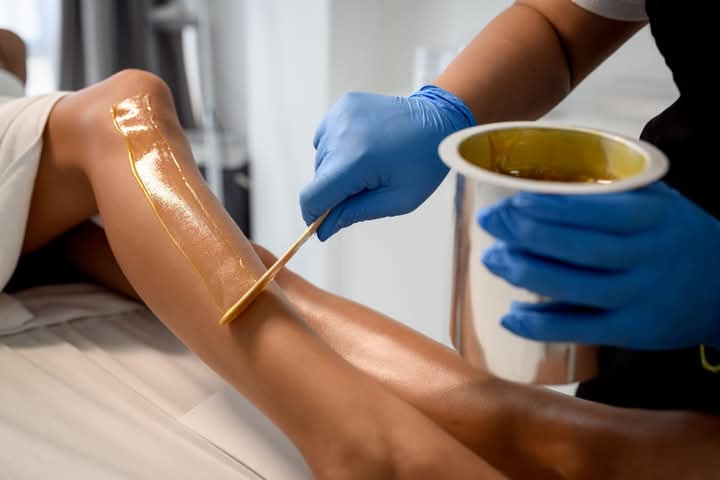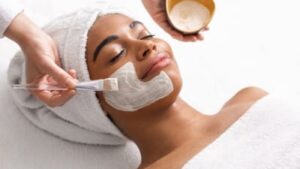Waxing
Waxing has long been a popular hair removal method, offering longer-lasting results compared to shaving. While it might seem intimidating to some, understanding the process, benefits, and potential drawbacks can help you make an informed decision about whether waxing is right for you. Let’s delve into the world of waxing and explore everything you need to know.
What is Waxing?
Waxing involves applying a heated wax, either hard or soft, to the skin, which adheres to the hair. The wax is then quickly removed, pulling the hair from the root. This process provides a smoother finish and slower regrowth compared to shaving, which only cuts the hair at the skin’s surface.
There are two primary types of wax used:
- Soft Wax: This wax is applied in a thin layer and removed using cloth or paper strips. It’s often used for larger areas like legs and arms.
- Hard Wax: This wax hardens on its own and is removed without strips. It’s generally preferred for sensitive areas like the face, bikini line, and underarms.
The Benefits of Waxing
Waxing offers several advantages over other hair removal methods:
1. Longer-Lasting Results
Because waxing removes hair from the root, regrowth is slower. You can typically expect to be hair-free for 3-6 weeks, depending on your hair growth cycle. This means fewer maintenance sessions compared to shaving.
2. Smoother Skin
Waxing leaves your skin feeling incredibly smooth and soft. Unlike shaving, which can leave stubble behind, waxing removes the entire hair shaft, resulting in a silkier finish.
3. Thinner and Sparser Hair Regrowth
With consistent waxing, hair tends to grow back thinner and sparser over time. This is because repeated removal can damage the hair follicle, leading to reduced hair growth.
4. Reduced Ingrown Hairs
While ingrown hairs can occur with waxing, they are generally less common than with shaving. Waxing removes the hair from the root, allowing it to grow back straight and less likely to curl back into the skin.
5. Exfoliation
Waxing also acts as a form of exfoliation, removing dead skin cells along with the hair. This leaves your skin feeling refreshed and rejuvenated.
The Waxing Process: What to Expect
The waxing process can vary depending on the area being treated and the type of wax used. Here’s a general overview:
1. Preparation
The area to be waxed is cleaned and prepped. Sometimes a pre-wax oil or powder is applied to protect the skin and ensure the wax adheres properly to the hair.
2. Wax Application
The wax is heated to a comfortable temperature and applied in the direction of hair growth. For soft wax, cloth or paper strips are placed over the wax.
3. Hair Removal
The wax is quickly removed in the opposite direction of hair growth. For soft wax, the cloth or paper strip is pulled off. For hard wax, the hardened wax is peeled off.
4. Post-Wax Care
After waxing, a soothing lotion or oil is applied to calm the skin and prevent irritation. It’s crucial to avoid sun exposure, hot showers, and tight clothing for a few hours after waxing.
Potential Drawbacks and Considerations
While waxing offers numerous benefits, it’s essential to be aware of potential drawbacks:
1. Discomfort or Pain
Waxing can be uncomfortable or painful, especially for sensitive areas. The level of discomfort varies depending on individual pain tolerance and the area being waxed.
2. Redness and Irritation
Redness and irritation are common side effects of waxing. These usually subside within a few hours, but can last longer for some individuals.
3. Ingrown Hairs
Although less common than with shaving, ingrown hairs can still occur with waxing. Proper exfoliation and moisturizing can help prevent them.
4. Allergic Reactions
Some individuals may be allergic to the ingredients in the wax. It’s crucial to perform a patch test before waxing a large area.
5. Cost
Waxing can be more expensive than shaving, especially for regular maintenance.
Tips for a Smoother Waxing Experience
To minimize discomfort and maximize results, consider these tips:
1. Hair Length
Ensure your hair is at least ¼ to ½ inch long for optimal waxing results. Hair that is too short may not adhere to the wax properly.
2. Exfoliation
Exfoliate your skin a day or two before waxing to remove dead skin cells and prevent ingrown hairs.
3. Avoid Irritants
Avoid using harsh soaps, lotions, or exfoliants on the waxed area for at least 24 hours after waxing.
4. Choose a Professional
For best results and to minimize discomfort, consider getting waxed by a licensed esthetician.
5. Communicate
Let your esthetician know if you have any allergies or sensitivities.
Who Should Avoid Waxing?
Waxing may not be suitable for everyone. Individuals with the following conditions should consult with a doctor or dermatologist before waxing:
- Very sensitive skin
- Certain skin conditions like eczema or psoriasis
- Diabetes
- Circulatory problems
- Use of certain medications like Accutane or Retin-A
Conclusion
Waxing is a reliable hair removal method that offers longer-lasting results and smoother skin compared to shaving. While it may involve some discomfort and potential drawbacks, the benefits often outweigh the risks for many individuals. By understanding the process and taking proper precautions, you can achieve a smoother, hair-free experience. Whether you’re aiming for silky legs, a clean bikini line, or smooth facial skin, waxing can be a valuable tool in your beauty arsenal.




